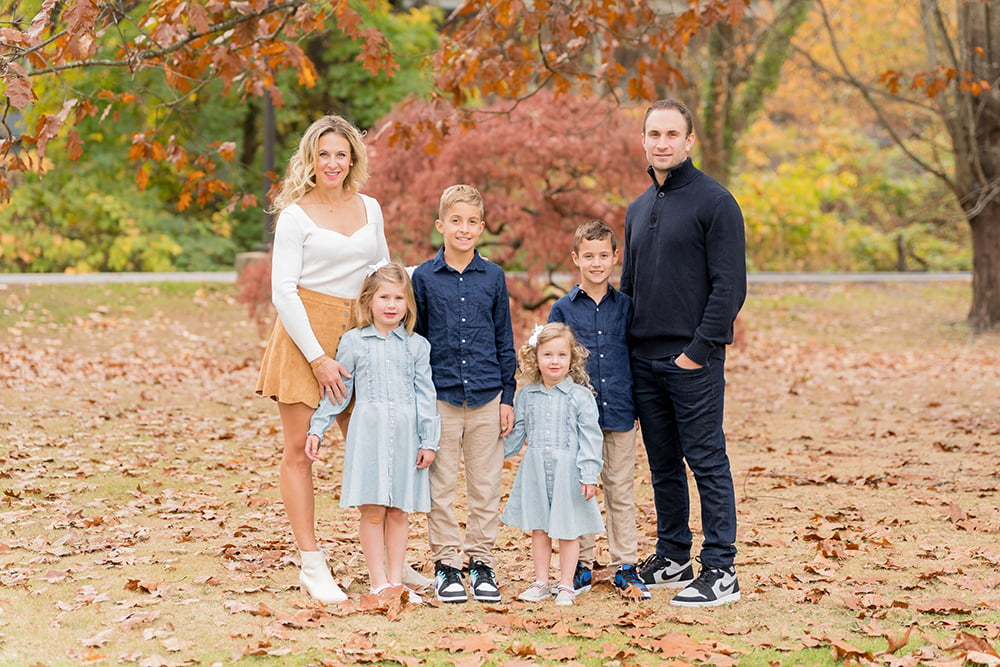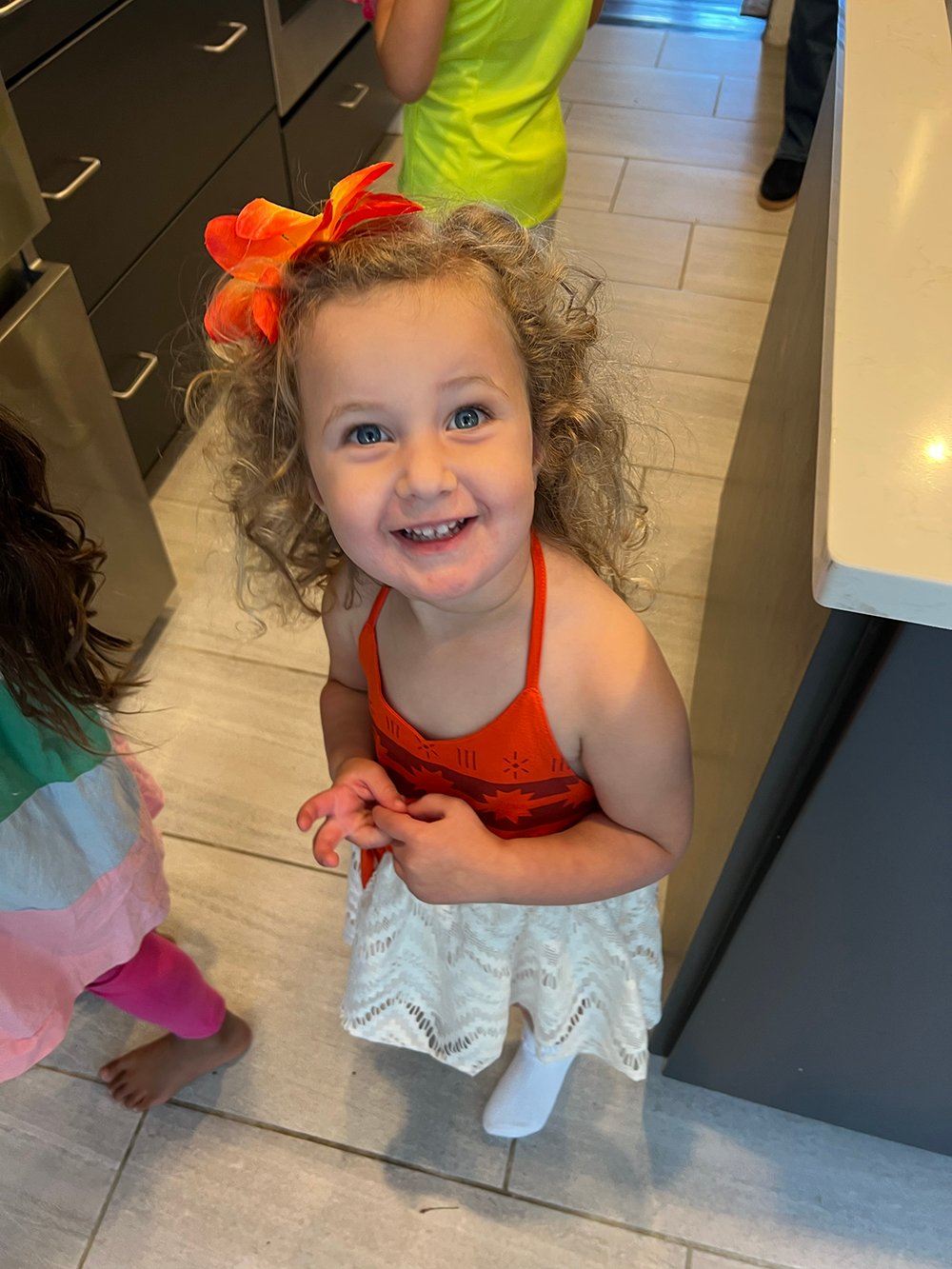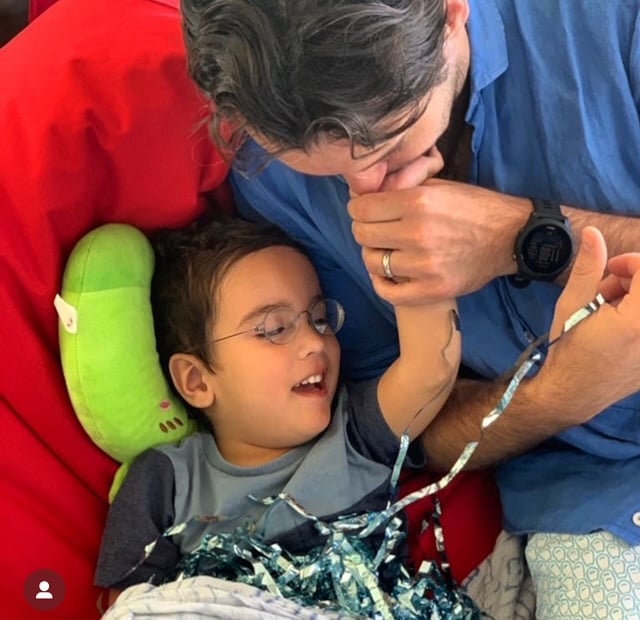By Lauren Medalie, Do Some Good • Scarsdale Business Beat, February 2025 • VOL. 2, No. 1
When you or someone you love is diagnosed with a serious illness, your world comes to a screeching halt. Suddenly, all that matters is one question: Is there treatment?
Now, imagine you’re searching for a diagnosis for your child. You’re going from doctor to doctor, desperate for answers. Finally, you get the diagnosis—a disease so rare that only 500 people in the United States have been diagnosed with it since it was discovered in 1991. To make matters more challenging, there’s only one hospital system in the entire country researching this disease.
What do you do? If you are Scarsdale residents Samantha and Andrew Isaacson and it’s your daughter Hannah, you do whatever it takes.
A Family’s Pursuit of a Cure: The Isaacsons’ Journey and the Power of Community Support
At just 9 months old, Hannah had her first seizure. Although all her neurological and genetic tests came back normal, her parents knew something wasn’t right. Abnormal eye and head movements as an infant, combined with lower physical strength compared to her three older siblings, drove her parents to push for more answers.
When Hannah was 13 months old, an EEG revealed she was experiencing absence seizures causing brief, sudden lapses of consciousness. A lumbar puncture provided the key finding: low glucose levels in her spinal fluid. Finally, they had a diagnosis—Glut1 Deficiency Syndrome (Glut1 DS), a rare genetic disorder with no cure.
Hannah was admitted to NewYork-Presbyterian Hospital. With only one specialist focused on her condition, the options were limited. The primary treatment available was not a medication, but a ketogenic diet. This high-fat, low-carbohydrate diet helps to provide an alternative energy source for the brain. In real life, that means every piece of food that goes into Hannah’s mouth must be the right dietary make up for fear of seizure or neurological damage.
Receiving this diagnosis was both shocking and heartbreaking for the Isaacson family. The concept of food as medicine felt foreign and daunting, yet it became their lifeline. They didn’t stop there. Samantha and Andrew are committed to funding a cure for Hannah and other patients living with this rare disease.
Luckily their friends and the Westchester business community have their back. They started a non-profit, the Isaacson Family Foundation, to fund promising research. Renowned neurosurgeon and Scarsdale resident, Dr. Michael Kaplitt, has graciously filled the role as the foundation’s head scientific medical advisor, using his expertise as the developer of the methods being used for gene therapy in the brain, for diseases such as Glut1 DS, to help advance their mission.
Their annual Scarsdale fundraisers are packed and have raised nearly $200,000 to support active research projects both at Columbia University Irving Medical Center and Child Neurology at NewYork-Presbyterian/Weill Cornell Medical Center. This summer they will sponsor a first of its kind, groundbreaking research workshop on Glut1 DS.
At age 3, Hannah is thriving. She attends preschool and receives physical therapy, occupational therapy, speech therapy, and support from a special education teacher. While the medical keto diet remains a daily challenge, it ensures that she is receiving the necessary nutrition to continue growing into a happy, healthy, and vibrant little girl.
The Isaacson family’s journey underscores the importance of health advocacy and access to care. It also highlights how a supportive community plays a key role in raising awareness and providing essential resources to families in need.
About Glut1 DS
GLUT1 Deficiency Syndrome (Glut1 DS) is a rare genetic disorder that affects the transportation of glucose (sugar) into the brain. Glucose is the brain’s primary source of energy, and when there’s a deficiency, it can lead to a variety of neurological problems.
The Isaacson Family Foundation raises awareness and makes strategic charitable investments in support of medical institutions who are working tirelessly towards treating and curing Glut1 Deficiency Syndrome. Currently, there is no cure. Raising awareness and funds go hand in hand when it comes to providing a better quality of life for those patients and families who are suffering.
Advocating for Hope: A Westchester Business Owner’s Fight Against a Rare Genetic Disorder
Westchester business owner and mother of two, Lara Thackeray Silvas, has found herself on an unexpected path as a passionate health advocate. She is now the Philanthropy Manager for Finding Hope for FRRS1L, a volunteer-led non-profit organization dedicated to funding a cure for a devastating genetic disorder.
Lara’s company, Silvas Consulting—a social impact talent and recruiting firm based in Westchester—has allowed Lara to harness her extensive skills and experience in strategic partnerships and relationship building to expand its mission to include fundraising, inspired by the heartbreaking diagnosis of her close friend’s child, AJ.
Once a thriving toddler, AJ experienced a sudden and severe regression around his second birthday, losing all abilities like holding his head up, sitting, walking, eating and speaking. FRRS1L disorder, pronounced “Frizzle”, leaves children cognitively sharp and aware but physically incapacitated. Frizzle children are trapped in their own bodies with only limited communication methods, such as eye gaze through a computer.
Currently, there are no medicines to control, slow, or cure the disorder. However, a glimmer of hope has emerged. A team of leading gene therapists at the University of Texas Southwestern (UTSW), led by Dr. Berge Minassian, has shown promising results in FRRS1L bred mice, by bringing their brains and bodies back to function. Their research indicates that gene replacement therapy could likely restore physical function in humans.
When Lara learned that researchers were close to developing a potential cure, but needed major funding, she took action. Through local community donations and corporate matching, Lara spearheaded efforts to raise significant funds. Her son, Gavin, also contributed by selling handmade bracelets to support the cause.
Thanks to these efforts and community support, the research is now advancing to the critical next phase: manufacturing the drug for clinical trials. This milestone brings renewed hope to families battling the disorder and highlights the importance of advocacy and grassroots fundraising. The organization’s next fundraising goal is to raise $3 million for the manufacturing process. Lara is dedicated to helping reach this goal to get Frizzle children around the world this lifesaving and world impacting treatment.
Lara’s journey exemplifies how personal connections and community-driven action can support groundbreaking research and hope.
ABOUT FRRS1L
FRRS1L gene is a protein coding gene contained in all cells of the brain. FRRS1L disorder causes the messages in the brain to not get through from one cell to another. The resulting disorder produces epilepsy, progressive dyskinesis (abnormal movements), developmental delay, diffuse hypotonia, and global loss of function. Current research shows children from birth to two years old having developmental delays, but still gaining abilities, and then at age two begin having seizures that cause regression, and quick loss of function and/or abilities. Frizzle children are trapped in a body they can’t move, however still retain high cognitive function, understanding, communication, and awareness.
Championing Health in Scarsdale and Beyond
Rare Disease Awareness Day is February 29th.
According to the National Institutes of Health (NIH), rare diseases affect more than 30 million people in the United States, which is approximately 1 in 10 individuals. Only a few hundred rare diseases have safe and effective treatments. Many rare diseases lack dedicated research programs.
Due to limited public funding, families and private organizations often spearhead fundraising efforts to support research for specific rare conditions.
Stories of the Isaacson family and Lara Thackeray Silvas highlight the critical role of private funding and family-led initiatives in advancing research for rare diseases that may not receive sufficient attention through public or institutional channels. They remind us that even in the face of overwhelming odds, collective action can create real change.
Here’s how you can make a difference:
- Support Local Fundraisers: Your presence and donations fuel advancements in treatment and research.
- Partner for Progress: Business owners can align their resources with health advocacy. Corporate matching, sponsorships, or hosting awareness campaigns can amplify local efforts.
- Raise Awareness: Share information about rare diseases and the importance of funding research. A conversation or social media post can inspire others to get involved.
Every Westchester resident and business can Do Some Good, proving that when a community unites for a common cause, miracles become possible.
Article by Lauren Medalie, Founder of Do Some Good
Do Some Good specializes in creating impactful partnerships between nonprofits and brands through strategic communications, events, and campaigns. www.dosomegoodconsulting.com





